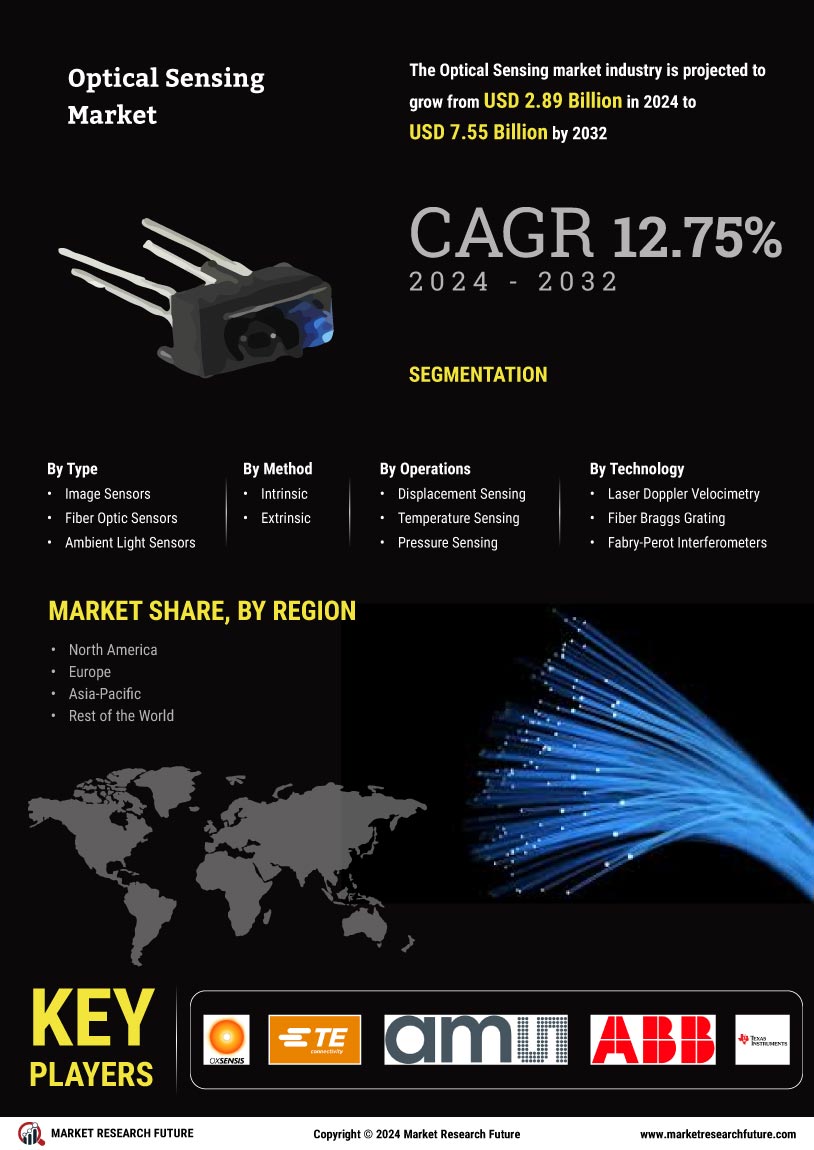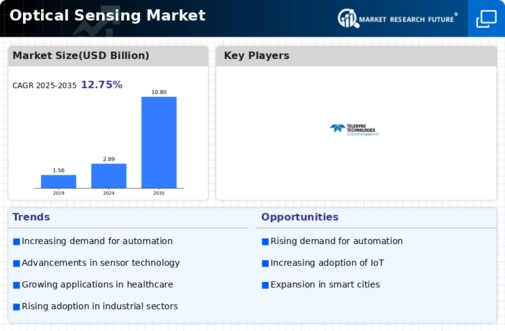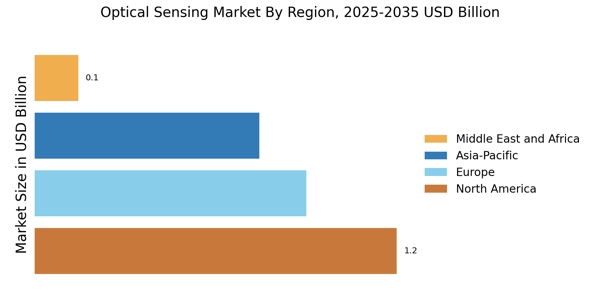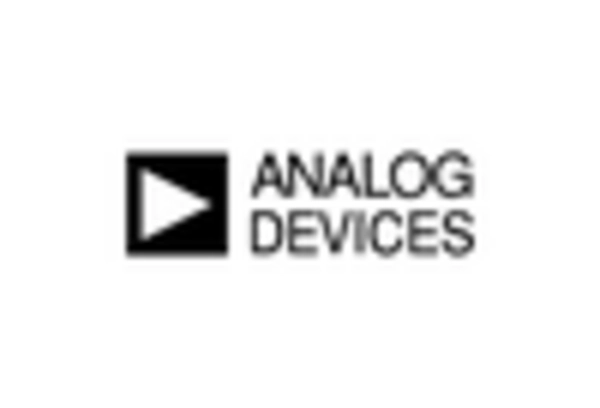Rising Demand for Automation
The Optical Sensing Market is experiencing a notable surge in demand for automation across various sectors, including manufacturing, automotive, and healthcare. This trend is driven by the need for enhanced efficiency and precision in operations. Optical sensors play a crucial role in automating processes, enabling real-time monitoring and control. For instance, the integration of optical sensors in manufacturing lines has been shown to reduce error rates by up to 30%. As industries increasingly adopt smart technologies, the reliance on optical sensing solutions is expected to grow, potentially leading to a market expansion valued at over 5 billion dollars by 2026. This growing inclination towards automation is likely to propel the Optical Sensing Market forward.
Integration with Smart Technologies
The integration of optical sensing technologies with smart systems is a prominent driver in the Optical Sensing Market. As the Internet of Things (IoT) continues to expand, the demand for optical sensors that can seamlessly connect with smart devices is increasing. These sensors enhance the functionality of smart homes, smart cities, and industrial IoT applications by providing accurate data for decision-making. For instance, optical sensors in smart lighting systems can adjust brightness based on ambient light conditions, leading to energy savings. The convergence of optical sensing with smart technologies is expected to propel market growth, with projections indicating a potential market size of 7 billion dollars by 2028.
Growing Focus on Safety and Security
The Optical Sensing Market is witnessing a heightened focus on safety and security measures, particularly in sectors such as transportation, defense, and public safety. Optical sensors are integral to surveillance systems, providing enhanced capabilities for threat detection and monitoring. The increasing incidence of security breaches and the need for robust safety protocols are driving investments in optical sensing technologies. For instance, the implementation of optical sensors in smart city initiatives has been shown to improve public safety by enabling real-time monitoring of urban environments. This trend is likely to contribute to a market growth trajectory that could see the Optical Sensing Market reach a valuation of 6 billion dollars by 2027.
Technological Advancements in Sensing Technologies
Technological advancements are significantly influencing the Optical Sensing Market, as innovations in sensor design and functionality continue to emerge. The development of high-resolution optical sensors, capable of detecting minute changes in environmental conditions, is particularly noteworthy. These advancements enable applications in diverse fields such as environmental monitoring, healthcare diagnostics, and industrial automation. For example, the introduction of hyperspectral imaging sensors has revolutionized agricultural practices by allowing for precise crop health assessments. The market for optical sensing technologies is projected to grow at a compound annual growth rate of approximately 10%, reflecting the increasing adoption of advanced sensing solutions across various industries.
Environmental Monitoring and Sustainability Initiatives
The Optical Sensing Market is increasingly aligned with environmental monitoring and sustainability initiatives. As concerns regarding climate change and resource management intensify, optical sensors are being utilized to monitor air and water quality, as well as to assess environmental changes. These sensors provide critical data that supports regulatory compliance and informs conservation efforts. For example, optical sensing technologies are employed in remote sensing applications to track deforestation and habitat loss. The market for environmental optical sensors is anticipated to grow significantly, potentially reaching 4 billion dollars by 2025, as organizations prioritize sustainability and environmental stewardship.

















Leave a Comment